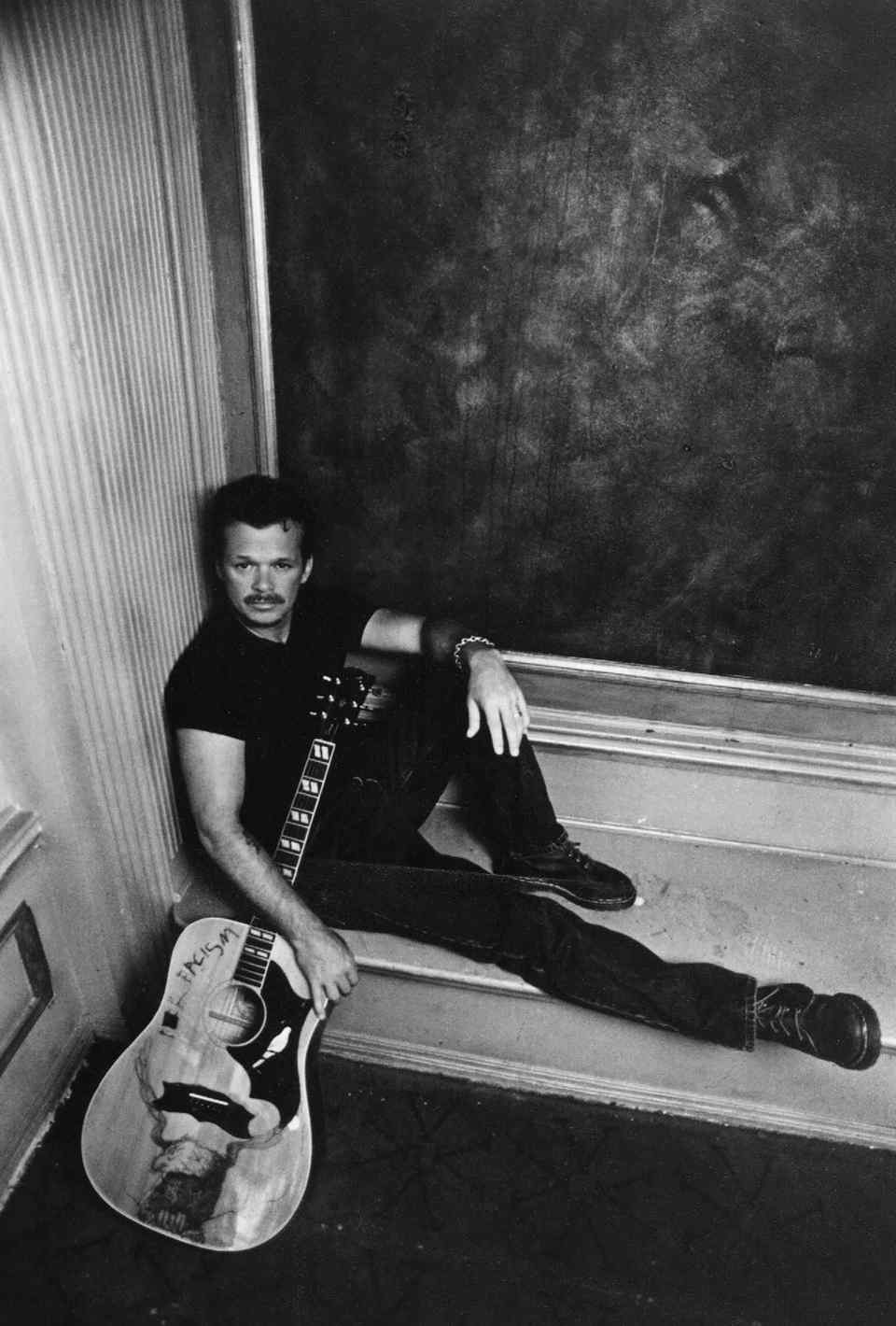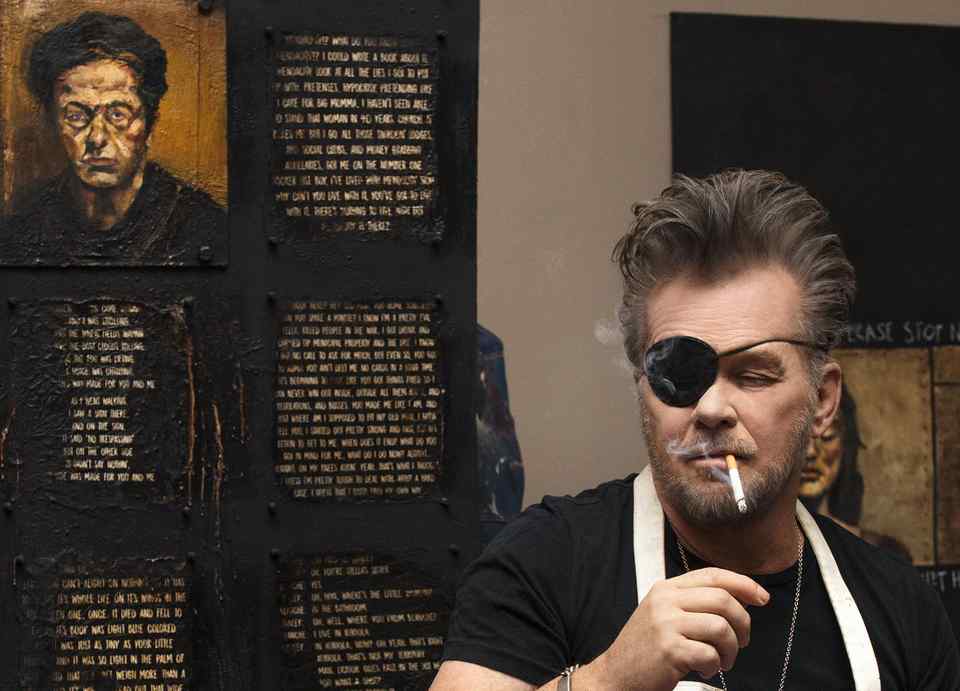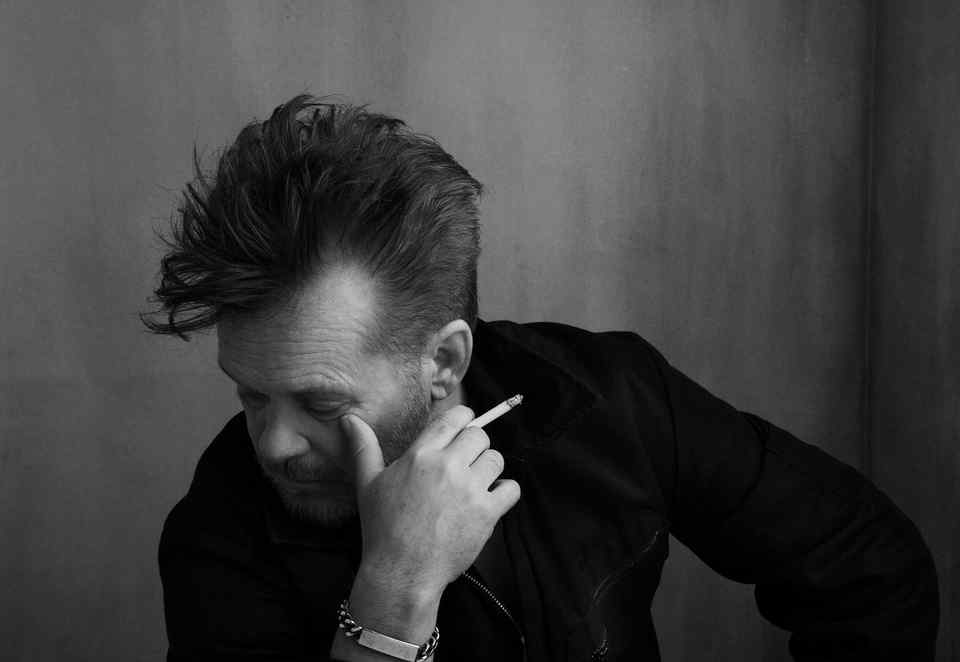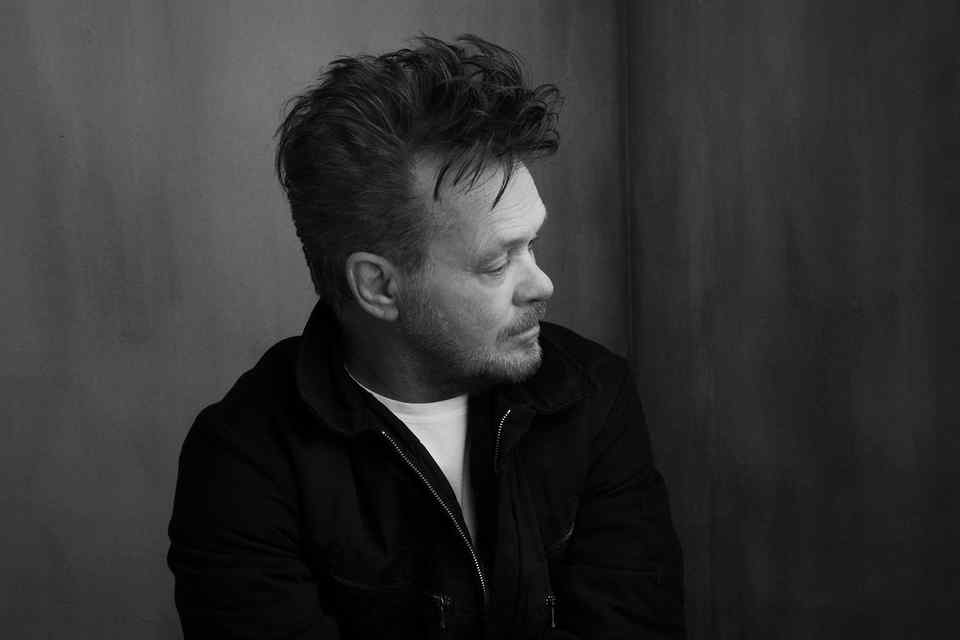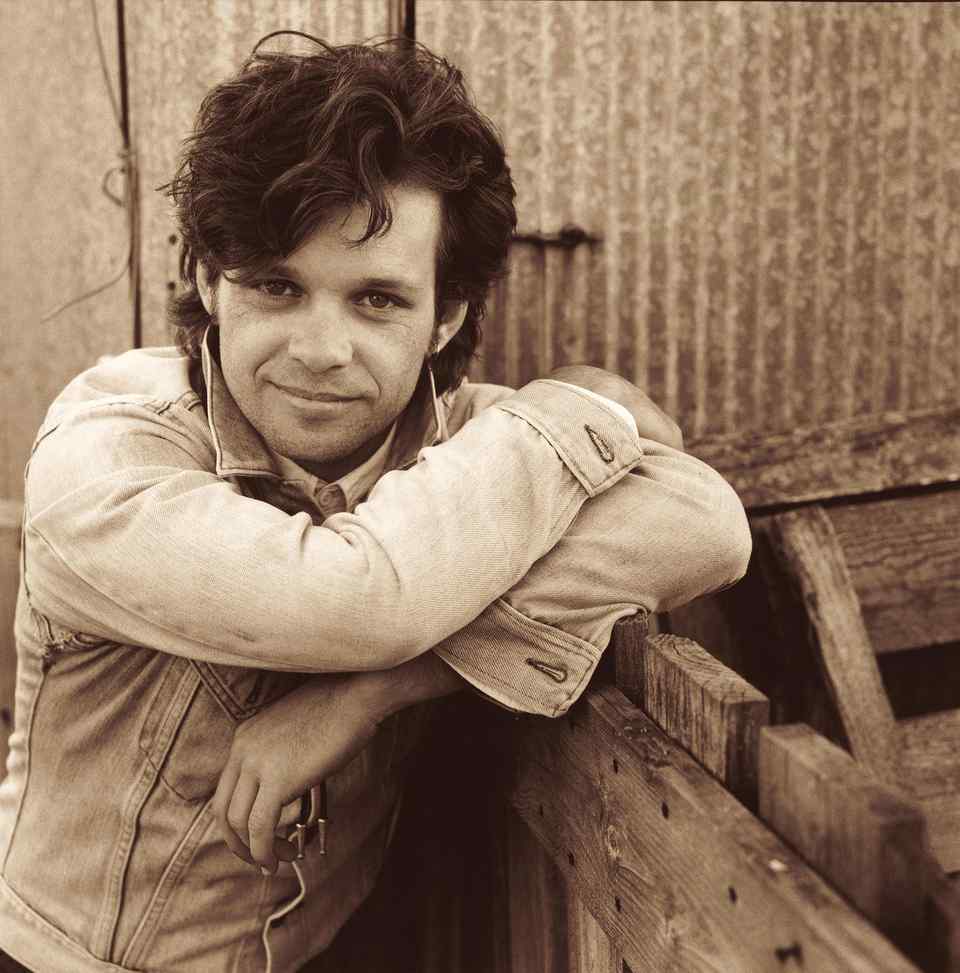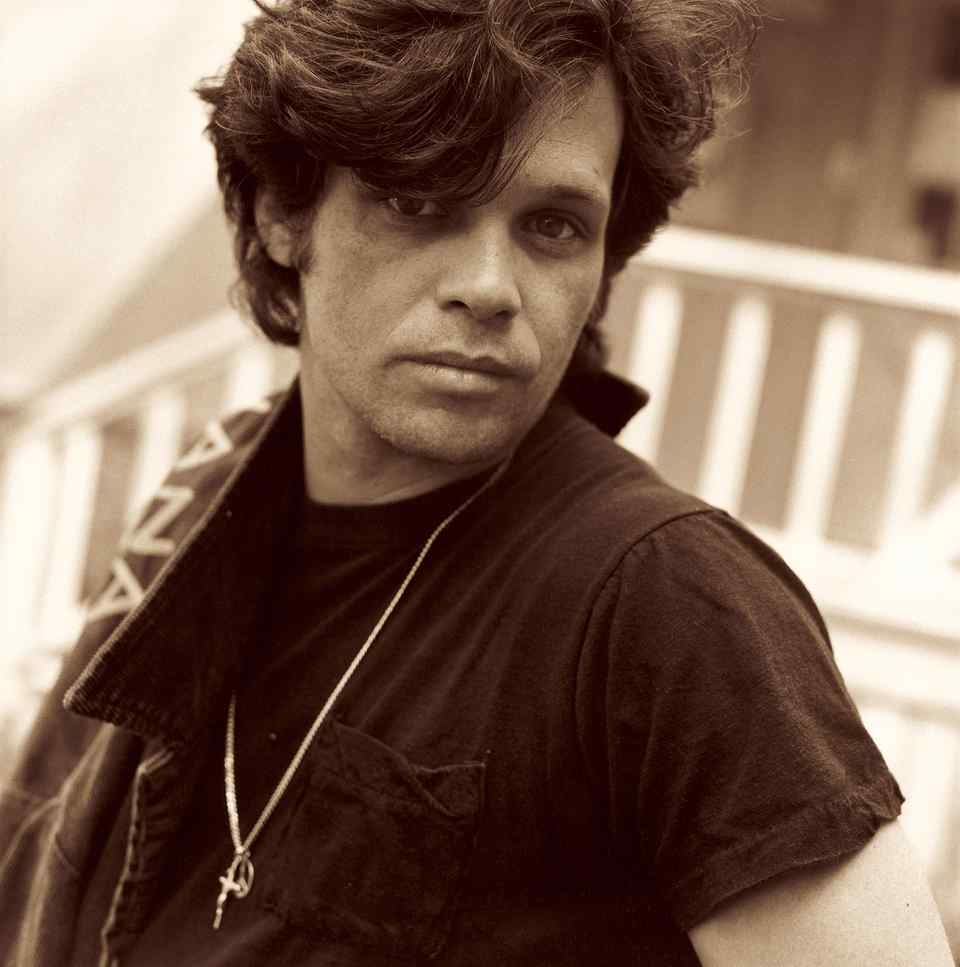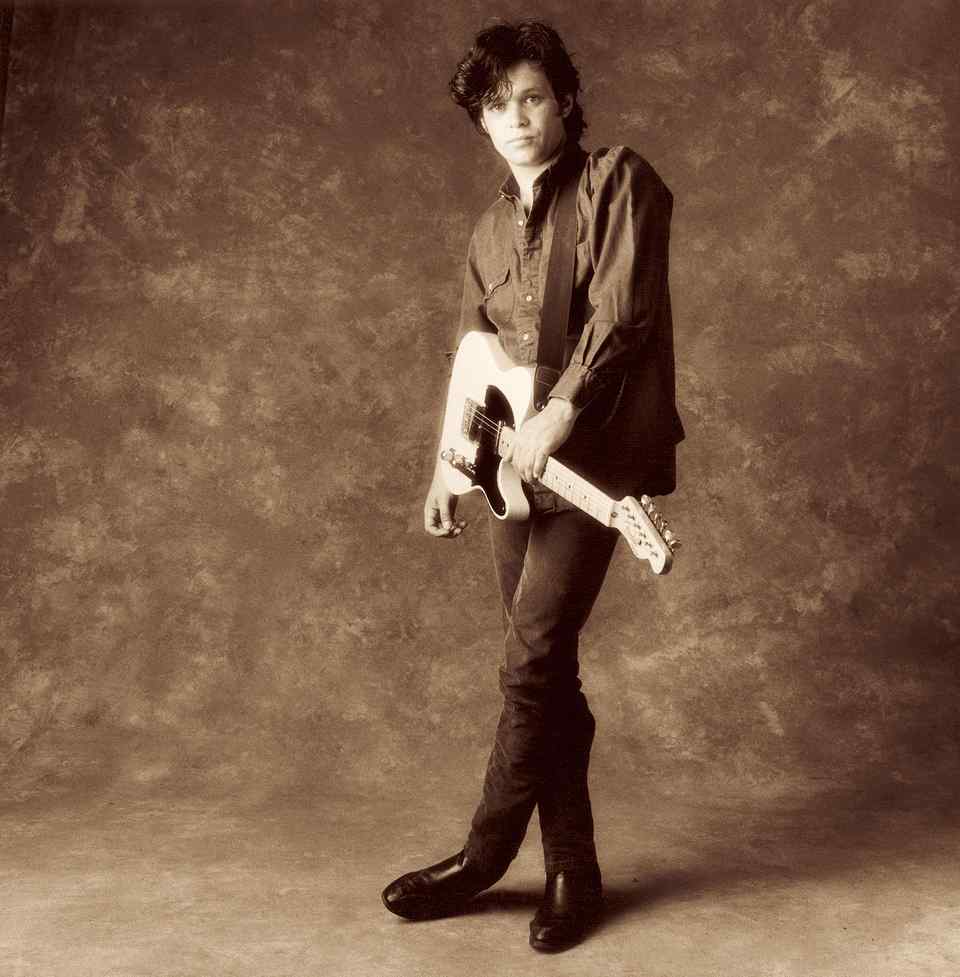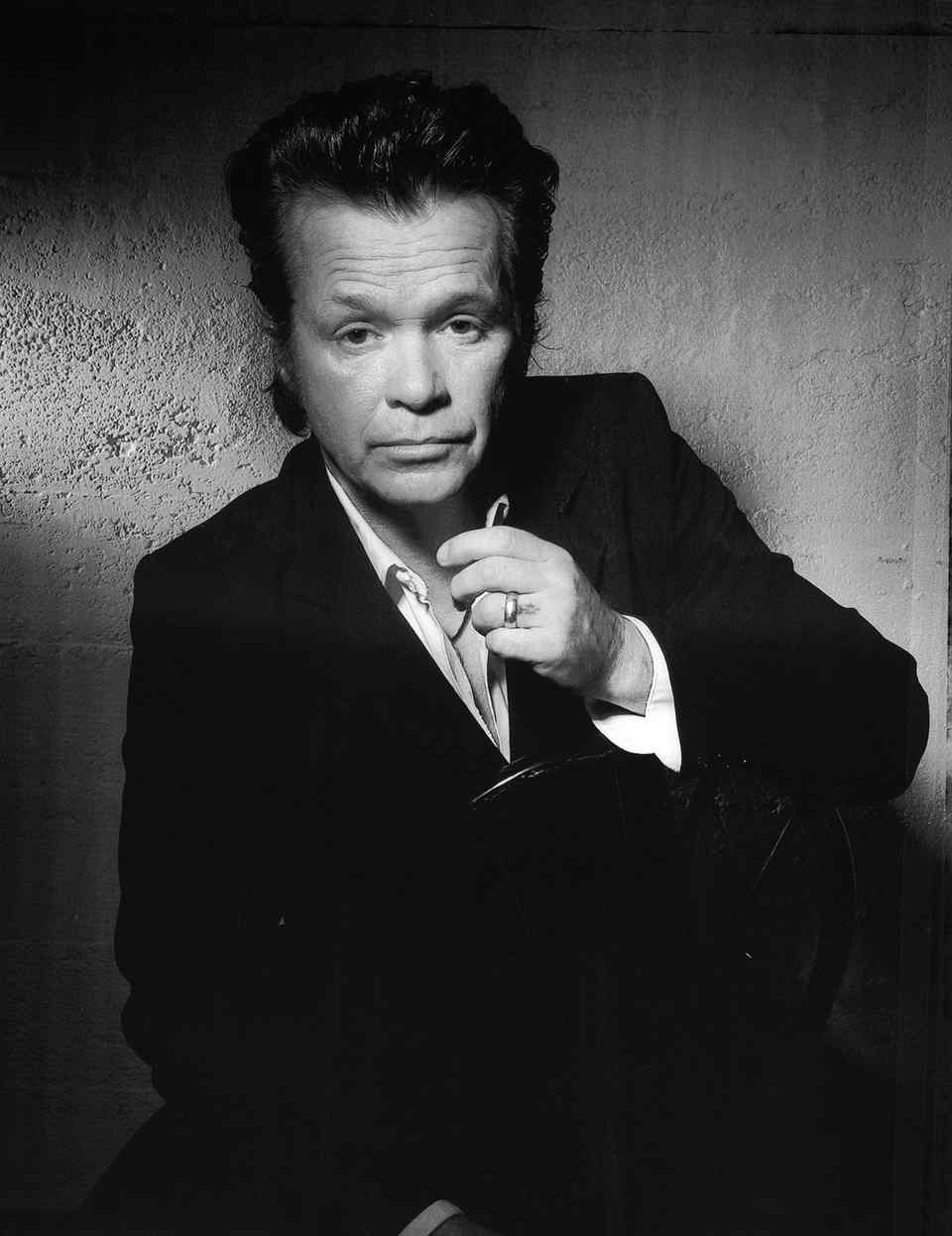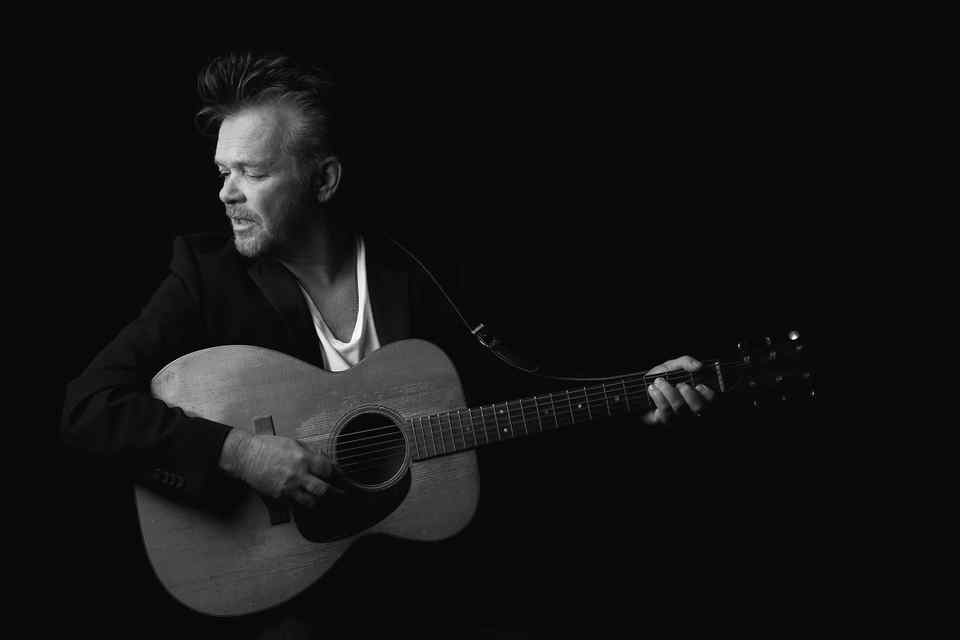Bob Morris - Author, Curator And Contributor To The New York Times - Mellencamp Interview
It’s an early March afternoon when the snow is gone and winter has bleached
all life out of the Indiana landscape. On the corrugated tin wall of the barn in
the woods that John Mellencamp uses as his studio, a big triptych of forlorn
faces both welcomes me and warns me away.
Welcome All U Suckers to Struggleville declares the bold stenciled text above.
“I started it twenty years ago and it’s curing outside because I want it to look
like an old billboard,” says Mellencamp who climbs out from behind the wheel of
an ancient John Deere cart to greet me in the blue jumpsuit of a working man. “I
still don’t know what it’s about.”
With the enthusiasm of a kid showing off a fort, he takes me to the barn’s
basement to look at a landfill of old furniture, machines and detritus that he
sometimes uses in his assemblage work, along with hundreds of stacked and
wrapped paintings that look complete.
“To me, they’re still not finished,” he says. “If I’m not surprised at the end,
then it’s not ready – the artist has to be surprised.”
First time viewers of his latest exhibition in an art career that goes back
almost as long as his career as a musician may be surprised as well. Called
“Life, Death, Love and Freedom,” as was his 2008 album, the artwork has a
reflective quality that brings to mind regret and mortality. But then without
the bright country jangle and roots rock beat that bring a jaunty air to so much
of his music, the portraits he paints give off a more haunted quality. Like the
characters in the Steinbeck and Faulkner novels he admired in his youth and the
dustbowl inflected songs of Woody Guthrie, he paints about alienation and
struggle more than joy or ease.
“Just like the blues, American folk music isn’t happy,” says the man who has
written about betrayed farmers, love that hurts, and how life goes on even when
the thrill of living is gone.
A natural storyteller, he says he studies faces wherever he goes.
“He paints psychologically penetrating mixed-media portraits about the
disenfranchised,” says Mikaela Sardo Lamarche, the curator of his new show at
ACA Galleries, which has a history dating back to the WPA era of representing
figurative art with a message. “He shows us the kind of people who you might not
notice and he has a sense of justice for all of them.”
The massive and handsomely furnished studio Mellencamp uses is a far cry from
the one he slept next to as a child in Seymour, Indiana. His mother was a
part-time painter of landscapes, still lives and portraits. “I grew up with the
smell of oil paint and turpentine,” he says “because it was before we had
odorless paint.” By the time he was a young teen, he was adding his own
brushstrokes to his mother’s paintings. “She wasn’t so happy about that,” he
adds.
He was also looking closely at the only world he knew. With a good pal, he would
lean against a parking meter in the middle of town, watching people drive by.
“It was all there was to do,” he says. “And it was exciting because there was
always the chance that a fascinating stranger might come our way.”
Years later, when his career in music had taken off, he noticed the work of Max
Beckmann, the German Expressionist. “And I just related to it immediately,” he
says. “It was so primitive in a way, and I knew he didn’t have to paint like
that.” From there, he became aware of the work of other daring figurative
painters such as Walt Kuhn, Chaim Soutine and Jack Levine, all now in his own
collection and inspirational.
While he spent a little time at the Art Students League in New York in the late
1980s, where he learned to paint faces from dark to light (“to give them the
illusion of depth that make them look alive,” he says), he considers himself
self-taught. Like Jean Michel Basquiat, another influence (whose paintings also
use text) he learned by looking. The result? A body of work reminiscent of
everything from Coptic and Byzantine icon paintings to Ashcan realism and
expressionism.
When I suggest the term Social Expressionism to define his paintings, he says
he’s OK with that. There’s also a deep strain of regionalism that informs his
work, bringing Grant Wood to mind.
Mellencamp is tentative as only a deeply self-critical artist can be when he
shows me his latest work, despite the fact that past exhibitions in regional
museums and galleries have earned him critical praise. And he won’t say much
about what the work means because he wants viewers to come to their own
conclusions.
When I suggest one portrait of a young man’s face looks cynical, he suggests a
better term would be questioning. A lyrical assemblage with text of angelic
looking women started, he says, with an old snapshot, but he has nothing more to
add. And all he can say about a mournful portrait of a woman with her eyes
closed under text that says “Oh Lord Can We Please Stop Now” is that once he
shut her eyes, he understood everything he needed to know to continue painting.
“I rarely come up with an idea ahead of time, and I just let the paintings go
where they want to go,” he says almost apologetically about the haunting pageant
of shadowy faces. “The only question I ask myself is if it’s beautiful, even if
it is grotesquely beautiful.” It reminds me of something Steinbeck once wrote:
“There’s more beauty in truth, even if it’s a dreadful beauty.” And this as
well: “I wonder how many people I’ve looked at in my life and never seen.”
It’s getting late, and I can see I’ve worn him out. More a self-effacing
humanist than a loquacious one, he would rather be writing a new song (as he did
the other night, he tells me) or starting a new painting. He perks up when he
throws me into his rumbling old cart to show me a couple of things outside. The
lake shimmers below and I ask if he fishes in it.
“I don’t have time for that,” he says. “Fishing is way too slow for me.”
On a cyclone fence between his studio and home he points out two paintings,
curing in the late winter air -- faces in the sunlight trying to warm
themselves. They remind him that there’s more work to do. “I started those
twenty years ago and it’s time to get back to them,” he says.
We drive up to the concrete mansion he designed decades ago with the same
geometric inventiveness he applies to his assemblage work. “I had to build this
house here to always have a place where I can keep my feet on the ground,” he
says. “If I didn’t I might be dead.” Django Reinhart music playing on outdoor
speakers chases away the desolation. So does a big old black dog wagging a tail.
On a rise in front of the circular driveway, he points out something that seems
out of place under an American flag and the state flag of Indiana. It’s an
unsightly old parking meter, given to him by the childhood friend who watched
the world go by with him in the small town that inspired his famous anthem and
still resonates for him today.
“If I ever left here I’d be betraying what I’ve always seen as the real world,”
he says.
Catching the late afternoon sun, the parking meter glows with an almost iconic
force.
“It’s kind of a work of art unto itself,” he says.
And also a story and a song.
